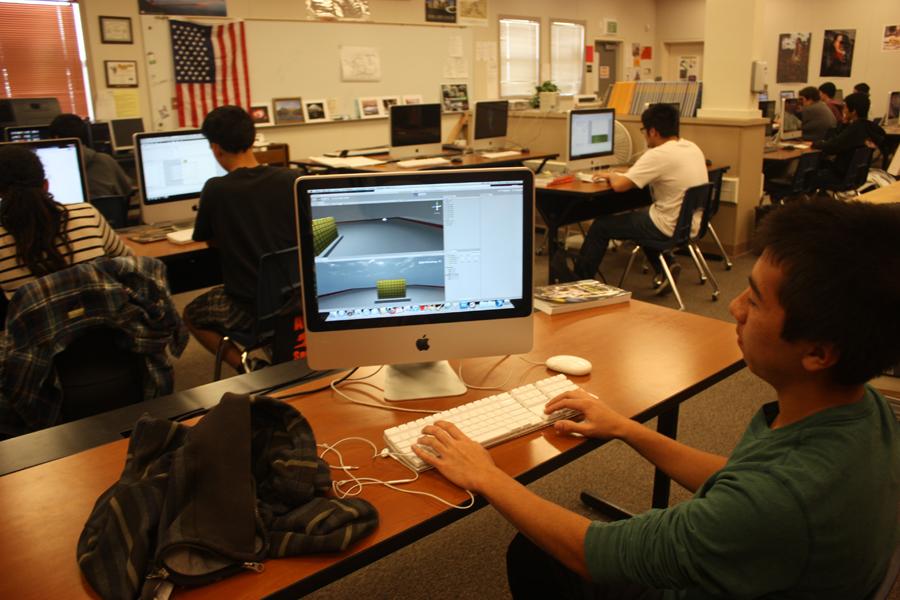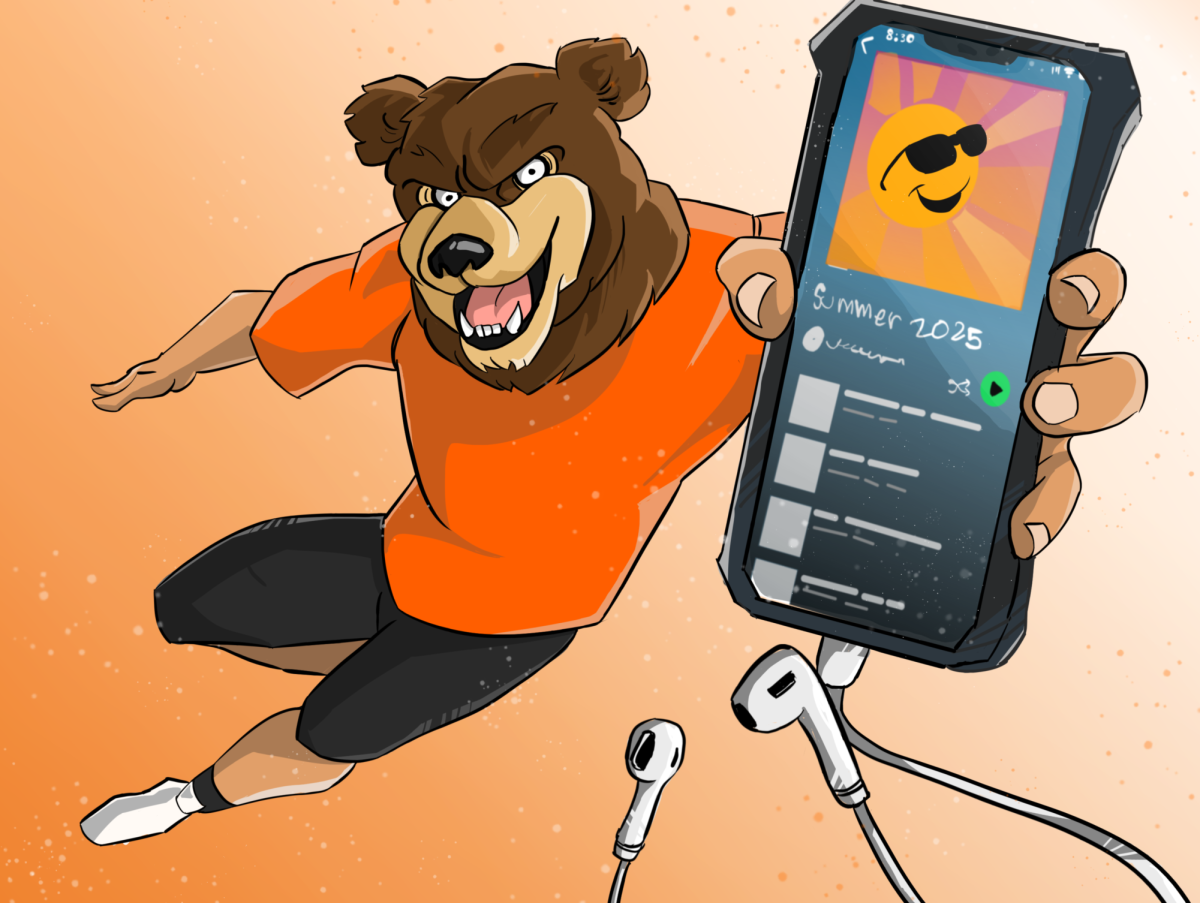Students looking for a new app to download should consider making their own.
That’s what a few students in Steve Armstrong’s Digital Design for the Web class have been working on this year.
Juniors Troy Wilkinson and Dennis Naroditskiy, and senior Robert Larkins are three students who are currently the most involved with a new program called Unity 3D.
It allows students to make games and other applications by providing platforms for the user to create animations and sounds. The coding to create an app requires knowledge in Java, a well known computer language most of us are familiar with.
The students aren’t working on any specific project at the moment as they are still learning how the software works.
“We might be able to finish a project by the end of the school year,” said Naroditskiy, “It’d be rough and crude, but we’d definitely be able to if we put enough work into it.”
In its second year, Cal’s Digital Design includes working with Photoshop CS6, animations, and web page design.
The game and app design is a delicious bonus for students who finish their assigned projects, as every group works at an individual pace.
About three to five people in each class are currently working with the Unity software.
“It’s pretty new so we’re mostly just experimenting and watching youtube tutorials,” says Wilkinson.
At the beginning of the semester, the class began working with Unity 3D, which is available to everyone online and a free trial is offered.
But if students want to stretch their abilities and explore the endless effects and components of the program, the upgrade is always available.
Unity allows users to work on the same project on different computers, even simultaneously, making it perfect for group work.
Once a project is completed, it’s ready to be downloaded onto any computer, smartphone, or iPad.
Armstrong has found that Apple products are easier to work on, especially for programs like Unity.
“With Unity 3D, you can create much more sophisticated objects and characters, unlike Games Factory, which is limited in its design,” said Armstrong.
Game design isn’t a new topic for the class.
In prior years, students used Games Factory 2 instead, a simpler program more suited for beginners.
Many students continue to use this software, mainly because it’s easier to work with.
Games Factory is training wheels for the more complex projects.
With Games Factory, students were able to create simple and addictive games similar to “Angry Birds” and “Temple Run.”
But with Unity, students can create more roleplay like games with plot and advanced storyline.
For example, students can write down instructions for a character to follow and design a whole virtual adventure.
They make more than games. One group of students has already created a program that features a human body.
The game allows the user to zoom in on each body part or organ and read information and facts, a tool that could be very helpful for studying anatomy.
If the class does succeed in completing an app, they will definitely consider putting it up on the Apple iStore so that it’s available for the public.
Many colleges are starting to offer classes similar to Armstrong’s course that allows students to create their own apps.
Stanford now has a course for iPhone and iPad apps where students learn to work with iOS development.
San Diego State University also has advanced certificates in web and mobile applications development.





